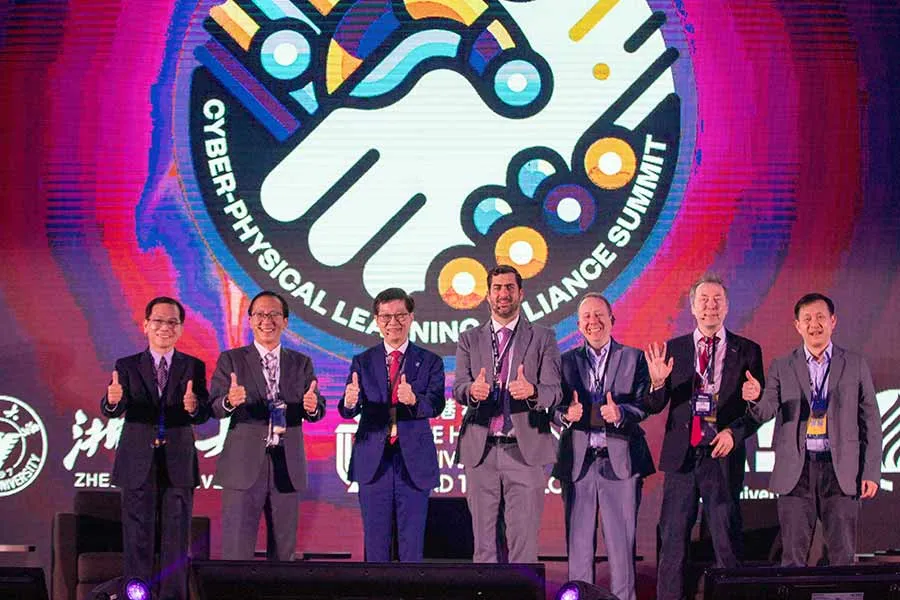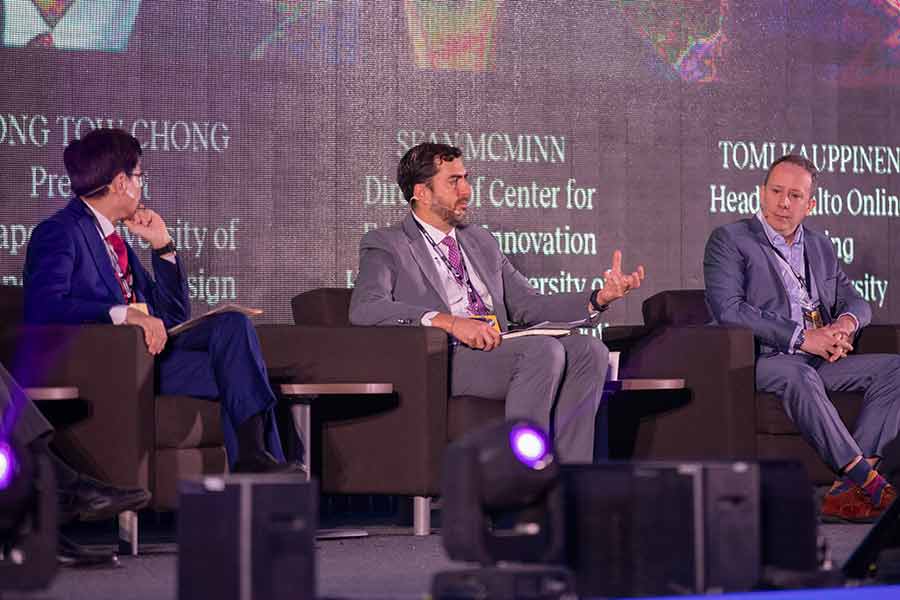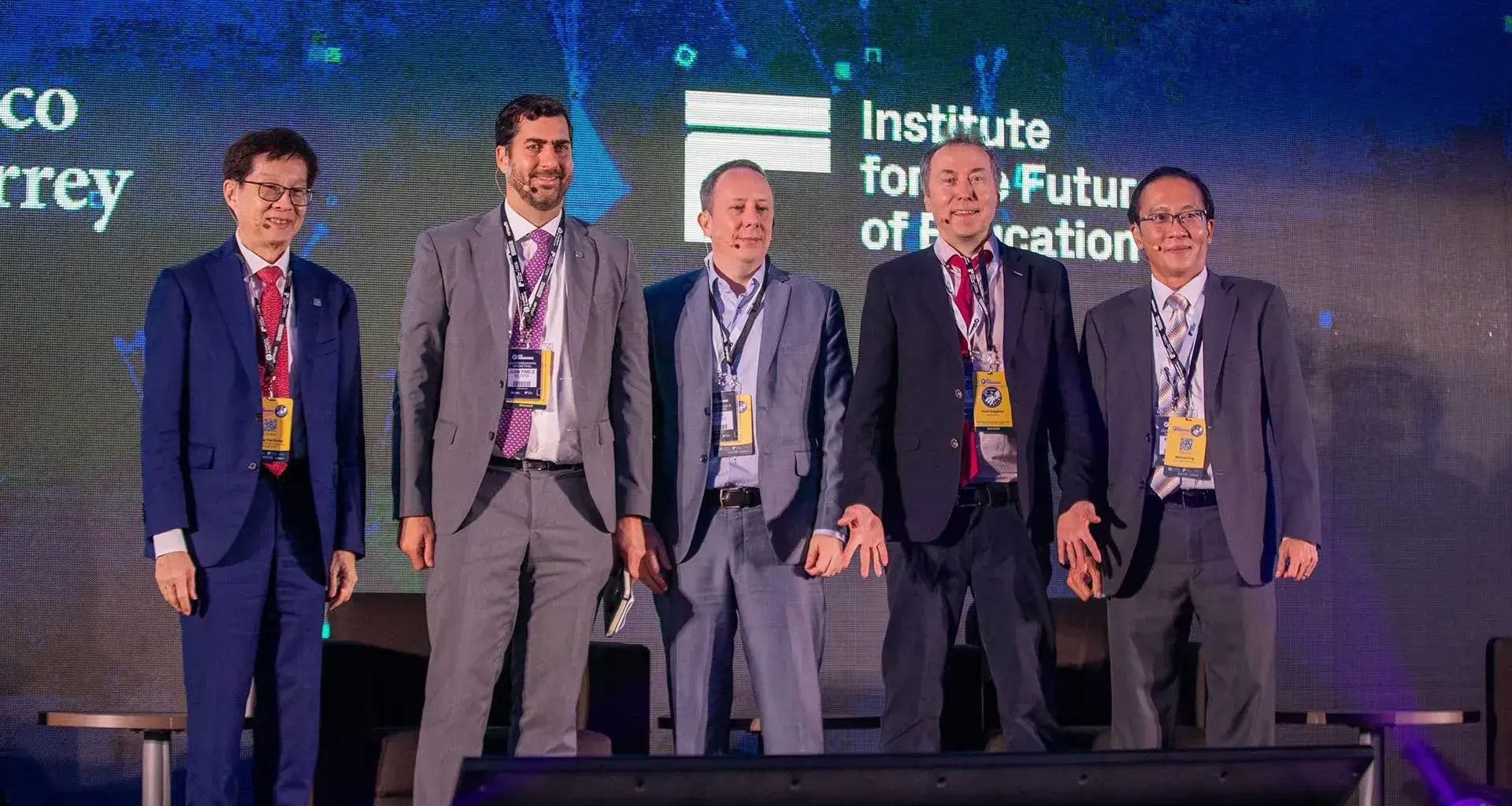The goal of the alliance between Tec de Monterrey, Singapore University of Technology and Design (SUTD), Aalto University, Hong Kong University of Science and Technology (HKUST), and Zhejiang University is to unite cyber and physical worlds to provide immersive and interactive learning experiences.
Details of the so-called Cyber-Physical Learning Alliance (CPLA) were announced during the IFE Conference, an international educational innovation event organized by the Tec.
Experiences of this type of learning can be exploited by students and instructors/teachers who are present in one classroom or laboratory at one educational institution, together with other students or teachers participating virtually from remote locations off-campus.
“Cyber-physical learning combines technology with a human-centric approach that covers socialization, peer learning, student well-being, ethics, data privacy, and much more,” explained Chong Tow Chong, President of SUTD.
The director described this alliance as “a significant leap forward in transforming education,” since its aim is for learning to be carried out anywhere and at any time, without physical restrictions and time constraints.
Technologies such as augmented reality, virtual reality, the metaverse, robotics, analytics, and Artificial Intelligence will be part of the experiences offered at partner universities.
The first Trends and Foresight Report on Cyber-Physical Learning was announced as part of the CPLA presentation, as well as the Cyber-Physical Learning Journal.

Why is it necessary to venture into Cyber-Physical Learning?
After the launch of the CPLA, the Magistral Perspectives, Progress and Future Directions of Cyber-Physical Learning panel was held, which was moderated by Michael Fung, executive director of the Tec’s Institute for the Future of Education.
“We need technological and pedagogical innovation to leverage the best aspects of this type of learning,” said Juan Pablo Murra, Rector for Higher Education at the Tec.
For Generation Z, which is always connected, it won’t be digital education: for them, it’ll just be education, and everything will have a digital component, so this future requires an active pedagogical design, which is one of the challenges of this alliance, said Murra.
According to Chong Tow Chong, President of SUTD, the lifelong learning trend will lead to lower and lower physical attendance on campus, so cyber-physical learning will open up new opportunities.
Experiences of applying Cyber-Physical Learning
Academic leaders shared the initiatives implemented in their educational institutions under the branch of cyber-physical learning.
At SUTD, the Campus X initiative emerged as a result of the pandemic, to try to understand cyber-physical learning. Through this, they began to identify the requirements and technologies that facilitate this type of learning, shared Chong Tow Chong.
Similarly, Murra shared that 400 Tec classrooms were transformed from in-person to hybrid ones, using technology to allow simultaneous remote interaction between students.
Initiatives such as the Hologram Professor and new spaces that are being configured with biometric technology, for example, will be used to enhance this type of learning.
Sean McMinn, Director of the Center for Education Innovation at HKUST, shared that his university uses augmented reality tools in laboratories, so that students from two different campuses can take classes simultaneously.
At Aalto University, they’ve generated around 300 cyber-physical learning pilot programs since 2016 usingpodcasts, augmented virtual reality, educational games, educational videos, and 360-degree spaces, said Tomi Kauppinen, Head of Online Learning at this institution.

Sharing upcoming challenges
The panelists shared the challenges they’ve seen after implementing cyber-physical learning activities.
The president of SUTD said that one of the challenges is for the technologies to really be adopted by students. “We have different tools that we’ve developed, and we want to make sure we focus on students, otherwise it will be difficult for them to adapt to these cyber-physical spaces.”
“The challenge is how we can create learning experiences that combine with different backgrounds, such as cultural ones,” Kauppinen remarked.
For McMinn, “training and support for teachers is the biggest challenge,” he concluded.
About IFE Conference 2024
Over 3,200 attendees registered for the tenth edition of the conference, whose central theme will be: “Education in the era of artificial intelligence.”
José Escamilla, Associate Director of the Institute for the Future of Education, noted that Artificial Intelligence has been an issue in the workplace and the field of education.
“It has a double impact in the academic world because the future of work is changing, and we have to change what we’re teaching at university so that people are prepared,” said.
The tenth edition of the Tec’s educational conference was held in a hybrid format on the Tec’s Monterrey campus from January 23 to 25.
YOU’LL DEFINITELY ALSO WANT TO READ:





